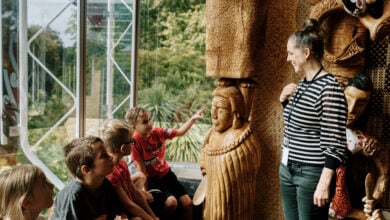Caring more about ‘out of school hours’ care

There’s a delicate magic to a truly terrific before/after school programme.
It should provide a safe, engaging space for students to enjoy quiet time, play, or work on school homework. It’s not school. But it does need to be a place where children can learn if they want to focus on reading or a school project that they would be working on at home.
There are strict guidelines for these programmes, explained by the Ministry of Social Development: the OSCAR Standards for approval are used to determine whether out of school programmes comply with sections 25–27 of the Social Security (Childcare Assistance) Regulations 2004. Out of school programmes provide care and recreation before school, after school, and during school holidays.
[pro_ad_display_adzone id=”4703″ align=”left”]These programmes are for children aged from five to 13, where the duty of care is formally handed over from the parent to the programme. The OSCAR Standards measure whether an out of school programme provides adequate care and a safe environment for children. The standards determine whether a programme is properly run and were developed after consultation with the OSCAR Foundation, key OSCAR stakeholders and OSCAR providers.
Children will require out of hours care for all sorts of reasons, from having working parents to living in a remote area or even student preference. As the quality of the programmes increase, so do their popularity, and the modern age brings with it new factors to consider. Care providers must cater to different age group needs: keeping tabs on the social dynamics of 12-year-olds requires a different approach to keeping a five-year-old occupied in their imagination. For this reason, it’s important that schools carefully consider their programme selection and have a close relationship with the programme provider to make sure their students’ receive the most magical care possible.
School News spoke with some providers in this sector to find out what it’s like to run ‘out of school hours care’ programmes.

Industry views…
On different activity options for before and after school care that benefit students most…
sKids managing director Dawn Engelbrecht said: “Good after school care services will have a variety of opportunities available for children of all ages to participate in and will also have the option for quieter children to just ‘chill’ with their friends or even a quiet corner where they can read a book.
“Good out of school care programmes have the child’s needs at heart. Staff that work there do so because they love being with children – they are not babysitters they are passionate people who want to make a difference in the life of your children. There are heaps of great programmes around the country that are doing a fantastic job each day, bridging that gap between home and school so that families can feel comfortable that their children are safe and cared for.
“As a parent, you ultimately want your child to be happy; so look for a programme that has a variety of activities available each afternoon for their child to choose from and talk to your child about trying new things with their friends. The good news is that most children are actually not overly worried about missing out on extra-curricular activities as long as they are having fun!”
Fun Zone Group managing director Rangi Esson said: “Structured free time plays a critically important role within OSC. After a long day at school, in a strongly structured learning environment, kids need some time to unwind and express their freedom; offering an optional 10 to 20 minutes’ homework support per day so kids can complete simple allocated homework tasks so parents can focus on quality family time at home; fun projects spanning many days, or even weeks; out-of-the-box craft ideas that require imagination and creativity; ‘cool and crazy’ science experiments; taking games they know well and changing the rules to create a new games; music, dance and any modern crazes that the kids are into; some balanced time chillout time for reading or electronic device use; fun group games that help develop social interaction. Good quality outside school care provides adult caregivers that are relatable, show positive role modelling and actively express sincere interested in what’s going on in kids’ lives and with their outside interests.
On changing trends in ‘out of school hours’ care, and the challenges faced by providers…
Dawn Engelbrecht added: “There are huge changes, both in NZ and Internationally. The biggest change in NZ is that the sector is becoming more regulated, which of course is good and bad. It’s good because there absolutely needs to be standards and protections in place to ensure our children are in safe professional environments. Unfortunately, the standards are essentially voluntary and there are still some providers out there that choose not to be assessed . The ‘bad’ is that with increased compliance comes increased cost, which is always challenging when you are trying to deliver an affordable service to families and, secondly, there is the real risk that we end up like some countries that are so highly regulated, good operators struggle to keep up with the red tape and close down.
“Often, the regulations are simply adapted from the early childhood standards, which are simply not appropriate for out of school care; why would we need nappy changing areas or laundry facilities?”
Rangi Esson noted: “More schools are accepting OSC as a valuable extended service within their schools, and parents’ need for OSC is increasing to the point that we are starting to see waiting lists like with ECE. Gaining approval as a registered OSCAR programme to allow parent to qualify for childcare subsidies has become easier. However, there is less government support available for new OSCAR programmes seeking grants that use to be available in the past. Parents are starting to expect convenient electronic enrolment and quick electronic sign in-and-outs systems. OSC programmes are also now having to increasing actively manage kids’ electronic content and electronic device usage.
“Tweens expressing their interests in relationships has dramatically increased, requiring OSC staff to become more active in supervision and guidance in this area. Age and stage-wise, kids 8-9 years old, are acting more like 10-11 with less interest in junior activities. Parents are needing longer hours of care, so there is an increased usage of before school services and after school services are trending towards longer 7pm finishes.
Dawn Engelbrecht also said: “Some countries are focusing on increasing the expectation of the sector to become an extension of the school day and so staff are expected to monitor the educational progress of children attending. Other countries are going in the opposite direction and focusing on ensuring that children are exposed to play in a variety of settings including risky play.
“Personally, I believe that we can include educational outcomes in out of school activities without requiring formal tuition to take place – think about cooking, for example, as an ideal opportunity for a conversation about science, maths and technology while having heaps of fun along the way (and you get to eat it at the end). Opportunities for play should be a given.
“In terms of allergies – especially food allergies – these definitely increasing but good providers are aware of that and design menus that are still fun and nutritious but ensure safety safe for all children to enjoy.
On how OSCAR standards and guidelines play into what kind of care or support these programmes offer…
“The OSCAR standards provide reassurance to parents and caregivers that a programme is properly run and takes place in a safe environment for children. In addition, parents and caregivers may qualify for an OSCAR Subsidy, explained Dawn Engelbrecht. “Parents of children attending unapproved programmes cannot receive an OSCAR Subsidy. If parents are unsure whether they qualify for the subsidy, they can find more information online.”
According to Rangi Esson, “OSCAR standards and guidelines play a fundament role in ensuring that critical child safety and health practises are being applied within a set programme environment. This gives parents and venue providers confidence in the standard of child safety and basic level of service being delivered.”
On recommendation for schools looking to improve or add ‘out of school’ care…
Rangi Esson advised: “Seek a OSCAR approved out of school care provider whose values and beliefs are in-line with the school and families. Ensure all kids ages and stages needs and interests are being met and the parents service needs are satisfied by the OSC. If possible, for parent convenience and peace of mind, schools should consider ideally allocated some space within the school grounds that is free outside of school hours. This further provides opportunity for hiring underutilised hall space and creating a valuable additional income stream for the school.
“Finally seek an OSC provider that can set up and operate independently from the school to minimise use of school resources; yet are willing to keep all lines of communication open with the school and are committed to building a strong ongoing trust relationship with the school.”
Dawn Engelbrecht also advised: “Look for providers that have experience in the sector and have programmes that are already approved under the ‘level three’ standards. Also look at what they offer families, what activities they can provide, what type of staff training they undergo, whether you can visit their current sessions, and whether they have appropriate insurance cover.”









